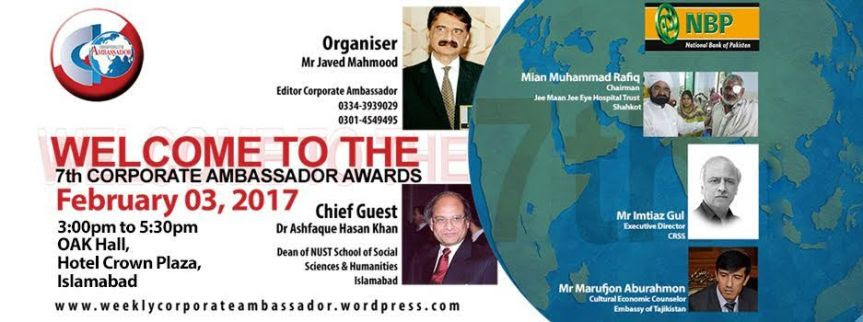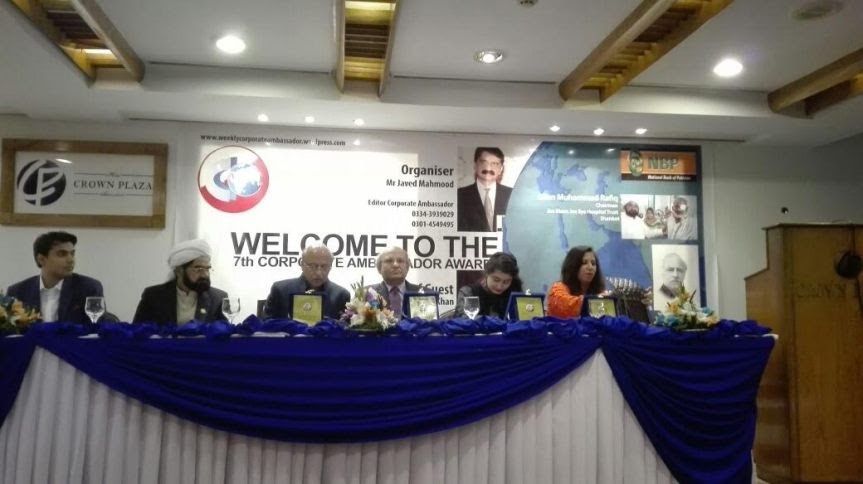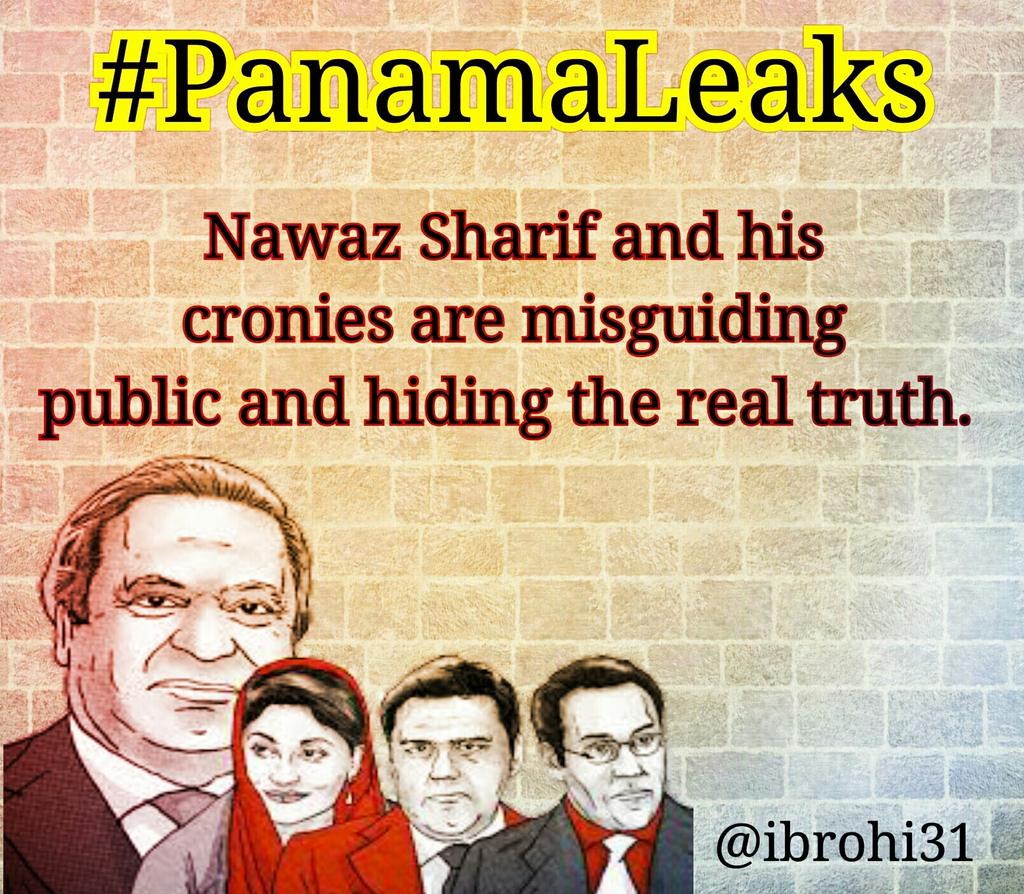Dr Ashfaque H. Khan, Pakistan’s renowned economist, former economic adviser to Ministry of Finance and Principal/Dean, NUST School of Social Sciences & Humanities says the external debt of Pakistan would increase to $80 billion in June-2017 and current account deficit is deteriorating because of non-serious approach of the government. Here is his latest article on balance of payment deterioration that he sent to the Editor Corporate Ambassador, Javed Mahmood, for sharing with readers and social media friends
Pakistan’s balance of payments is rapidly deteriorating since the beginning of the fiscal year 2016-17 for a variety of reasons; while independent economists have been expressing their serious concerns; the government and particularly the country’s finance minister appear to have lost interest in addressing this ominous development in external balance of payments. This is indeed a matter of serious concern and hence the subject matter of this article.

Dr Ashfaque H. Khan is sitting on stage as Chief Guest at the 7th awards, organised in Islamabad in Feb 2017.
The readers would recall that I made a presentation in a Debt Conference organized by a local think tank on November 12, 2016 in Islamabad. In my presentation, I forecasted that the current account deficit for the current fiscal year (2016-17) would reach $7.5 billion as against $2.5 billion in the previous year (2015-16). Furthermore, the financing requirement for the year would reach $14.5 billion ($7.0 billion for debt servicing). Accordingly, Pakistan’s external debt and liabilities would touch $80.3 billion by end–June 2017, rising from $73 billion in end-June 2016. In order to address the rising current account deficit and external debt, I gave several recommendations.
Instead of taking my projection seriously and taking corrective measures to address the ominous development, the finance minister reacted angrily through his lengthy article on debt (February 1, 2017, Business Recorder). He charged me and my fellow independent economists (without naming of course), for being selective in presenting the facts, misinterpreting the facts, predicting doomsday scenario for Pakistan’s debt and the overall balance of payments, venting bias through writings, and most importantly committing disservice to the nation.
May I ask the honorable finance minister to tell us the latest position of current account deficit and debt? Isn’t it true that the current account deficit has reached $7.247 billion during the ten months (July – April) of the current fiscal year while two more months still are to go? Isn’t it going to touch somewhere between $8.5 – 9.0 billion in 2016-17? Isn’t it a fact that the Moody’s Investor Services has predicted that Pakistan’s external debt would reach $79 billion by end-June 2017 as opposed to my forecast of $80 billion?
What are your views Mr. Honorable Finance Minister on these developments? Were we wrong in predicting these developments some six month ago? Did we create doomsday scenario for Pakistan’s external debt and current account deficit? Did we commit disservice to the nation by projecting the ground reality? Or, did you commit disservice to the nation by misguiding the people of Pakistan? We need your answer Mr. Finance Minister?
Why have we landed in such a difficult situation today? The current account deficit for the first ten months (July – April) of the current fiscal year has amounted $7.247 billion as compared with $2.378 billion in the comparable period of last year, which is deteriorated by 205 percent. What has caused such a massive deterioration in current account deficit in this fiscal year? At least two main reasons can be identified. Firstly, massive deterioration in trade balance owing to the decline in exports on the one hand and extra – ordinary surge in imports on the other. Secondly, significant decline in external inflows, namely remittances and Coalition Support Fund (CSF). These two inflows primarily have been responsible for keeping current account deficit low in the past.
What has happened on export front? Exports have declined from over $25 billion in 2013-14 to less than $22 billion in 2015-16—a decline of over 12 percent in two years. Exports are down by 1.3 percent in the first ten months of the current fiscal year and expected to touch $21.5 billion by the end of the fiscal year – a decline of 2.1 percent compared with last year. What has caused a steady decline in the exports? There are several factors that have contributed to the steady decline in exports. These include: i) senseless taxation to achieve revenue targets under the IMF Programme, rendering Pakistan’s exports non-competitive in the international market; ii) holding back refunds of exporters’ to jack up revenue and hence creating serious liquidity problem for the exporters. Exporters were forced to borrow from commercial banks to run their factories and meet the importers demand. This has added to the cost of their doing business; iii) infrastructural bottlenecks such as the availability and prices of electricity, gas and water which have made our exporters non-competitive; iv) keeping the exchange rate at a level which is not consistent with the country’s macroeconomic fundamentals; v) little or no communication between exporters and the country’s chief executive; vi) relatively poor business environment in the country.
In short, the government itself continued to pursue policies that have eroded the competitiveness of Pakistani exporters in international market. The IMF is an equal partner to such misguided policies which have damaged Pakistani exports.
What has happened on the import front? Persistence of overvalued exchange rate has encouraged imports despite massive reduction in oil import bill owing to the sharp decline in international price of oil. As compared with the benchmark year of 2013-14, Pakistan has saved over $13 billion in the last three years owing to the decline in oil prices. During the first ten months (July – April) of the current fiscal year, Pakistan’s imports has registered an increase of 15.5 percent to reach $38 billion.
What has caused import to surge in 2016-17? The government has tried to hide behind the imports of CPEC—related projects, particularly power sector—related projects. This is factually untrue. Total imports bills have increased by $5.089 billion in the first ten months (July–April), of which almost 34 percent ($1.722 billion) contribution came from the import of petroleum group. Within petroleum group, the surge is mainly caused by the import of petroleum products, LNG and LPG. The latter two are the new entrant to our import bill. Pakistan has imported $1.128 billion of gas in the first ten months of the current fiscal year as against $537 million in the same period last year. Going forward, import of gas will continue to rise with serious consequences to the balance of payments.
Besides import of petroleum group, machinery imports contributed 16.2 percent ($823 million) to the rise in overall import bill. In fact, the contribution of import of power generating machinery in total increase in import was nearly 1.8 percent. The contribution of food and transport import in the rise of overall import stood at 14 percent and 11.4 percent, respectively. Thus, almost 71 percent contribution to the surge in overall import came from four groups, namely petroleum, machinery, food and transport while power generation machinery contributed negligibly.
Even an ordinary student of economics could see the ominous developments taking place in Pakistan’s balance of payments. I and others could forecast these developments six months ago. But what is so painful to see is that the staff of the IMF attached with Pakistani desk failed miserably in predicting these developments in the balance of payments. Their forecast went haywire within one quarter of the current fiscal year. How can the IMF staff go so wrong in their prediction of exports, imports, current account deficit, budget deficit and so on? This speaks volume, in the words of Dr. Hafiz Pasha, about the quality of work produced by the IMF staff working on Pakistani desk. This is not the IMF staff that I have dealt with for over a decade. Perhaps they deliberately kept their eyes and ears closed and in so doing they committed, in the words of Shahid Kardar—the former Governor of the Central Bank—‘academic dishonesty’.
Where do I see balance of payments and debt situation in the next year? If the current non-serious attitude of the government persists and reckless borrowing with pride and pleasure continues, Pakistan is likely to face serious balance of payment crisis in 2017-18. Since the government is in the last year of its tenure, this is highly unlikely that it can implement any meaningful reforms to promote exports. This is the year of promises and giving, with little resources in the pocket. Imports will continue to surge because of the inappropriate exchange rate and expansionary fiscal and monetary policies fueling aggregate demand. Accordingly, the current account deficit is likely to remain in their range of $12.5–13.5 billion in 2017-18. With debt servicing requirement rising to $9.0 billion in 2017-18, the total financing requirement for the year would be in the range of $21.5–22.5 billion. Likely availability of external financing is estimated at $12.5 billion, thus leaving a financing gap of $9-10 billion. Where has this amount come from? Accordingly, our external debt and liabilities would cross $90 billion by end-June 2018.
This is the emerging picture of Pakistan’s balance of payments for the year 2017-18. My request to the finance minister is that he should not shoot the messenger; the messenger has established its credibility in 2016-17; take my calculation seriously and do whatever you can to prevent the crisis.








